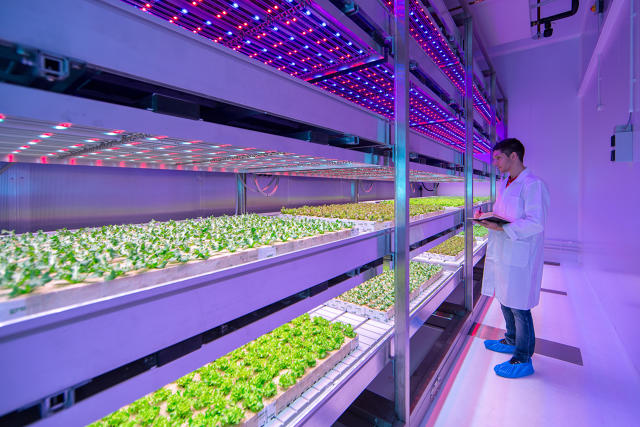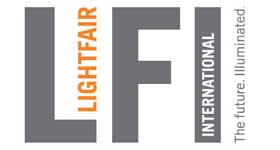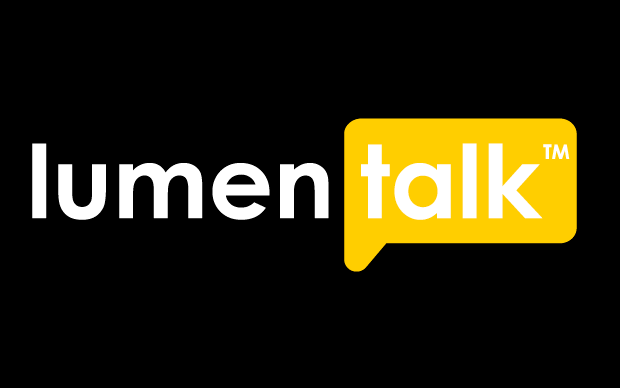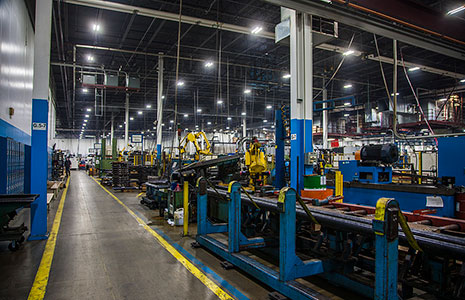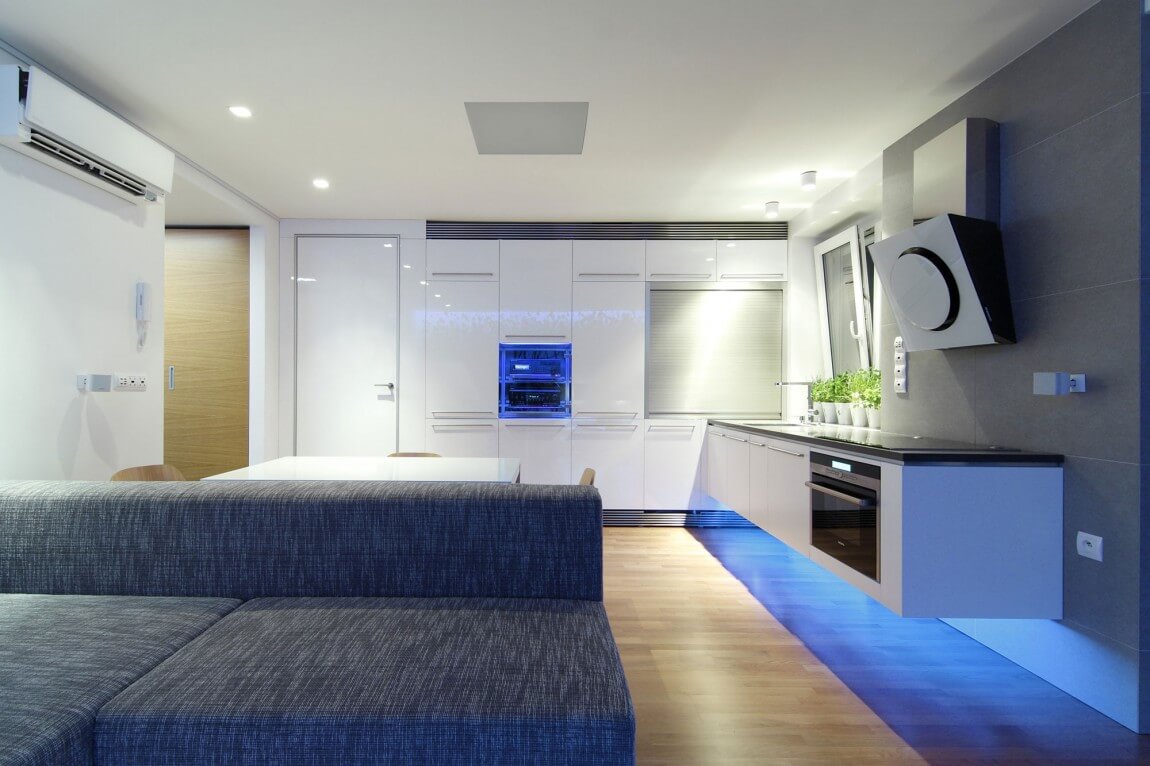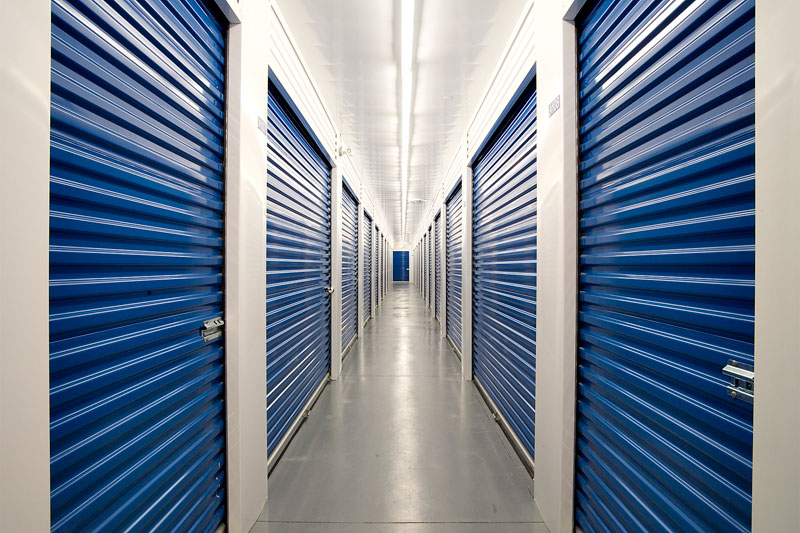Avnet, a business-to-business technology distributor, recently opened a 900 square-foot light lab in Chandler for Avnet customers to use throughout the engineering process to give them measurements needed for product development.
Continue readingTechnology Breakthroughs Announced at Lightfair International
The largest annual lighting trade show was held in early May, and after hearing some of the newest product announcements and technology developments, you’d think the LED lighting industry was growing at the speed of light! More than 500 exhibitors and manufacturers gathered in Las Vegas from around the world to show off their latest products at Lightfair International’s 22nd trade show. General Electric and Philips have both been working in their labs on an LED equivalent to a 100-watt incandescent lamp. GE’s equivalent is a 27-watt LED lamp they say has a 25,000 hour lifespan while Philips equivalent is only 25 watts. With a 75% power consumption decrease, both of these lamps can save you money by consuming less power and lasting longer than incandescent lamps!
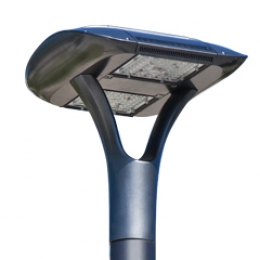 Not all LED lamps are dimmable yet, but Osram Sylvania and Juno Lighting may have broken this barrier with the fixtures they showcased at Lightfair International. Both companies used different technology and took a different route when constructing these fixtures. Juno Lighting’s WarmDim, which won an award at Lightfair International, is able to be dimmed with the addition of a microprocessor while Osram Sylvania’s fixture was built with a combination of different colored LEDs that allow it to dim. This technology could drive the expansion LED lighting in home, office and even restaurant settings!
Not all LED lamps are dimmable yet, but Osram Sylvania and Juno Lighting may have broken this barrier with the fixtures they showcased at Lightfair International. Both companies used different technology and took a different route when constructing these fixtures. Juno Lighting’s WarmDim, which won an award at Lightfair International, is able to be dimmed with the addition of a microprocessor while Osram Sylvania’s fixture was built with a combination of different colored LEDs that allow it to dim. This technology could drive the expansion LED lighting in home, office and even restaurant settings!
With one of the last barriers breached, the ability for LEDs to dim like incandescent, why not switch to LEDs today? Isn’t technology great?
No More Extra Wiring with LED Retrofits Thanks to Lumentalk
Lightfair International, the largest annual lighting trade show in the world, attracted more than 500 manufacturers and exhibitors to Las Vegas this May. New products and technology advancements were showcased by all, but one company’s product could change the LED retrofit process forever.
 Some LED retrofits require extra wiring, driving up the cost of installation. Lumenpulse, a company that focuses on LED lighting for commercial, institutional and urban applications, designed a product that uses existing power lines, called Lumentalk. Lumenpulse’s video of Lumentalk explains that LEDs, like many lamps already, can be dimmed and controlled to save money and electricity, but LEDs sometimes need two sets of wiring, one for the power and one to talk to light and tell it how much to dim. The Lumentalk uses the fixture’s current power line for power and data so that the LED lamps can be used with any dimmer!
Some LED retrofits require extra wiring, driving up the cost of installation. Lumenpulse, a company that focuses on LED lighting for commercial, institutional and urban applications, designed a product that uses existing power lines, called Lumentalk. Lumenpulse’s video of Lumentalk explains that LEDs, like many lamps already, can be dimmed and controlled to save money and electricity, but LEDs sometimes need two sets of wiring, one for the power and one to talk to light and tell it how much to dim. The Lumentalk uses the fixture’s current power line for power and data so that the LED lamps can be used with any dimmer!
For businesses who didn’t want to switch to LED lighting because you didn’t want to tear down your walls for new wiring, now is your chance to save money on installation costs and look into Lumentalk. There’s no excuse not to switch to LEDs now!
Relumination Joins Arizona Restaurant Association (ARA)

Relumination is excited to announce we have joined the Arizona Restaurant Association.
The Arizona Restaurant Association is the leading voice for restaurant owners, managers and workers in the State of Arizona. They focus on education, lobbying for their members, raising the bar for the industry and saving their members money.
ARA members are learning that energy-efficiency is savings that goes right to the bottom line and we look forward to working with restaurant owners to implement energy-efficient lighting. In fact we’ve started to make a name for ourselves in Arizona for energy-efficient lighting upgrades in restaurants and bars!
If you would like to connect with ARA, check out their facebook page.
Relumination joins U.S. Green Building Council LEED Program
The Leadership in Energy and Environmental Design (LEED) program was introduced in 2000 by the U.S. Green Building Council to “provide building owners and operators with a framework for identifying and implementing practical and measurable green building design, construction, operations and maintenance solutions.” The standards set forth by the LEED program are measurable and attainable, two criteria we use in developing our own projects. Aligning ourselves with the LEED program strengthens our commitment to sustainability and one of our core values; to do what is right for the environment.
Continue readingRelumination accepted into Northwest Trade Ally Network
 Relumination is proud to announce that we have been accepted into the Northwest Trade Ally Network. According to the Northwest Trade Ally Network, “Through the Network, trade allies and utilities can work cooperatively to help customers make cost-effective, energy-efficient lighting choices.”
Relumination is proud to announce that we have been accepted into the Northwest Trade Ally Network. According to the Northwest Trade Ally Network, “Through the Network, trade allies and utilities can work cooperatively to help customers make cost-effective, energy-efficient lighting choices.”
The Northwest Trade Ally Network focuses on lighting efficiency projects in existing and new construction facilities. There are currently over 80 utility providers that are part of the network including Pacific Power and Rocky Mountain Power.
 The Northwest Trade Ally Network is sponsored by Bonneville Power Administration with support from Northwest utilities and energy efficiency organizations. You can learn more about the program here.
The Northwest Trade Ally Network is sponsored by Bonneville Power Administration with support from Northwest utilities and energy efficiency organizations. You can learn more about the program here.
Relumination to Present at 2012 Arizona Self Storage Association Trade Show and Conference
Join us May 7th-9th, 2012 at the Arizona Self Storage Association Trade Show and Conference at the Marriott Phoenix Mesa in downtown Mesa, AZ. We will be displaying the latest in energy-efficient lighting for Self Storage owners and operators.
Continue readingManufacturers Save Big on Energy and Maintenance Costs With LEDs
With energy costs on the rise, the word on the tips of the tongues of manufacturers is how to conserve energy and spend less. It’s time to get rid of those inefficient, dim fluorescent high-bay lights and install LED lighting. Martisa, a Spanish manufacturing company in Barcelona that produces metal parts for automobiles, was having problems with its 400-watt high-pressure sodium lamps throughout its facility earlier this year. The color rendering of the lamps was so poor that employees were unable to see the true colors of items in the facility. Also, if there was a power outage, the lights would take at least 10 minutes to come back on. Martisa also spend a considerable amount of money on maintaining the lights, between buying new lamps all the time and renting the platform to get to the lights.
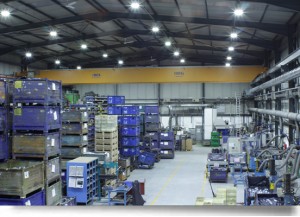 To solve these problems, Martisa installed 150-watt Durosite LED high-bay lights throughout the facility, reducing its energy consumption from lighting by 69%. The facility no longer has to wait for the lights to come on after a power outage because LEDs turn on full power as soon as you hit the switch. The lighting no longer flickers or dims, and the improved color rendering allows employees to see true colors. With a 60,000-hour lifetime and 5 year warranty on the new lamps, Martisa can focus less on their electricity and maintenance costs and more on their products.
To solve these problems, Martisa installed 150-watt Durosite LED high-bay lights throughout the facility, reducing its energy consumption from lighting by 69%. The facility no longer has to wait for the lights to come on after a power outage because LEDs turn on full power as soon as you hit the switch. The lighting no longer flickers or dims, and the improved color rendering allows employees to see true colors. With a 60,000-hour lifetime and 5 year warranty on the new lamps, Martisa can focus less on their electricity and maintenance costs and more on their products.
Apartment Complex Conserves Electricity With LEDs
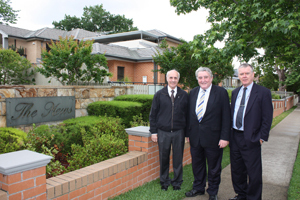 Next time you see an apartment complex, take note of how many lighting fixtures you see. There are, of course, lights inside the apartment, but there are lights outside of the apartment doors, on the building, lighting up paths around the perimeter, staircases, exit signs, parking garages or lots, gyms and laundry facilities, and so much more. That is a lot of electricity being used by just one apartment complex, and there are millions of them around the world! Lowering energy consumption is as easy as installing LED lighting in and around apartments. LEDs are more efficient than traditional fixtures and the vivid white light will help your customers navigate the area better and make them feel safer at night.
Next time you see an apartment complex, take note of how many lighting fixtures you see. There are, of course, lights inside the apartment, but there are lights outside of the apartment doors, on the building, lighting up paths around the perimeter, staircases, exit signs, parking garages or lots, gyms and laundry facilities, and so much more. That is a lot of electricity being used by just one apartment complex, and there are millions of them around the world! Lowering energy consumption is as easy as installing LED lighting in and around apartments. LEDs are more efficient than traditional fixtures and the vivid white light will help your customers navigate the area better and make them feel safer at night.
Mews apartment complex in was spending tons of money on electricity for interior and exterior lighting, lift motors, water features and storm-water pumps. The apartment complex consists of two-story buildings and a single-level basement parking garage. Its electricity consumption in the common areas of the complex alone was 25,681 kilo-watt hours per year, and expelled about 27 tons of greenhouse gases per year. Mews installed 3-watt LEDs in place of the 50-watt halogen lamps outside the entrance, motion detectors in the parking garage and interior hallways, LED lighting in the stairwells and a solar power system. The lighting upgrades not only made the facility look better, Mews saved so much in electricity and maintenance the project was paid for in under 2 years.
Tempe Storage Company Saves $4,000 Annually With LED Lighting
Self-storage companies strive to provide customers clean, well-lit units to store their valuables. With outdoor lighting that has to be on from dusk until dawn, it doesn’t make sense to use dim, inefficient high-pressure sodium lighting around the units. Self-storage companies need LED lights, a brighter and more efficient option to save money on electricity and keep costs down for customers. LED lighting consumes 50-80% less energy than traditional lighting options and lasts over a decade.
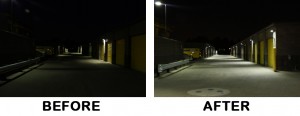 Relumination contracted with Tempe Storage Company in Tempe, Ariz., to update its exterior lighting from 215-watt high-pressure sodium lamps to 26-watt LEDs lamps, reducing the number watts used per hour from 8,800 watts to 1,144 watts, and reducing energy consumption from its lighting by 87%. The LED lights are estimated to last 12 years, saving the self-storage company $4,000 each year on maintenance and electricity costs. Along with monetary savings, the LEDs improved the lighting quality for Tempe Storage Company and created a safer environment for customers loading and unloading items at night. The facility can also see more detail on its 24-hour security cameras thanks to the brighter light.
Relumination contracted with Tempe Storage Company in Tempe, Ariz., to update its exterior lighting from 215-watt high-pressure sodium lamps to 26-watt LEDs lamps, reducing the number watts used per hour from 8,800 watts to 1,144 watts, and reducing energy consumption from its lighting by 87%. The LED lights are estimated to last 12 years, saving the self-storage company $4,000 each year on maintenance and electricity costs. Along with monetary savings, the LEDs improved the lighting quality for Tempe Storage Company and created a safer environment for customers loading and unloading items at night. The facility can also see more detail on its 24-hour security cameras thanks to the brighter light.

